
© 2010-2024 by Fine Arts of the Southwest, Inc. All rights reserved.
Unauthorized reproduction or use is strictly prohibited by law.
A magnificent Navajo Sterling silver dish
by Kenneth Begay for The White Hogan Shop, Scottsdale, AZ, c.1950’s
There is a very good reason why Kenneth Begay (1913-1977) is admiringly referred to as being “The Father of Modern Navajo Silver” and this is it in a nutshell. His superlatively-crafted and impeccably designed Modernist-Style Navajo silver pieces are so fresh, so unique and so striking that it nearly boggles the mind with beauty. You can run out of superlatives mighty quickly with work of this exalted quality as it literally takes your breath away.
His incredibly innovative bold Modern designs can somewhat overshadow the fact that Begay was completely steeped in, deeply rooted and thoroughly trained in historic traditional Navajo silversmithing techniques, aesthetics and methods by his earliest mentor, Fred Peshlakai (1896-1974), the brilliant silversmith son of the legendary historic Navajo silversmith, “Besh-la-gai-il’hini Alts-oozigi” (1831-1915) who is also known today as “Slender-Maker-of-silver.”
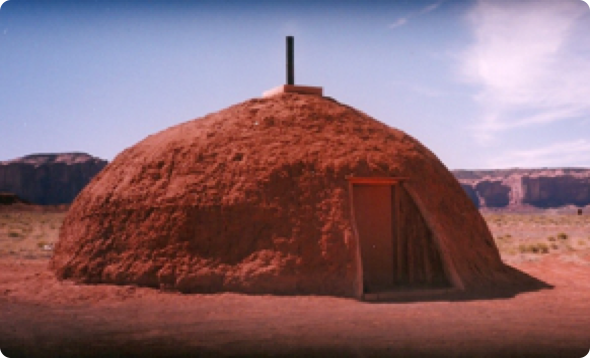
The historic continuity of 19th and 20th Century Navajo silversmithing was handed down from Slender, Maker of Silver (1831-1915) at left to his son, Fred Peshlakai (1896-1974) at center and then in turn to Peshlakai’s student, Kenneth Begay (1913-1977) at right.
Left photo source and © Palace of the Governors, Santa Fe, NM. Center photo source and © Chicago History Museum. Right photo source and © Arizona Republic.
"I like to create something new and still use the old Navajo design style.”
-Kenneth Begay
Kenneth Begay (1913–1977) was called the "father of modern Navajo jewelry" for his clean, bold, modern designs. But he also exemplifies the long history and continuity of Navajo jewelry-making: Begay studied under Fred Peshlakai, who had been taught by his father, Slender Maker of Silver, who was trained by Atsidi Chon, one of the earliest Navajo silversmiths. Begay in turn taught many others including his son, Harvey, now a renowned jeweler.
.0001
-From “Totems to Turquoise”, The American Museum of Natural History
This exceptional hand-wrought dish is an exquisite sculptural object possessed of a form and degree of preciousness almost beyond description. The dish is very sparingly decorated by the application of six small sections of raised silver bars along its outer perimeter at equally spaced intervals all the way around the dish. This pattern of a section of raised or ridged parallel silver bars is also repeated and echoed in one panel of the dish’s silver handle. These small raised similar sections all serve to beautifully accentuate and highlight the much larger expanse of plain, beautifully-hammered silver which makes up the vast majority of the dish’s silver surface. The “planishing” or fine hammering of this surface catches the light magnificently and the varying reflections add immensely to the precious gleaming appearance and overall “feel” of the piece.
The round main body of the dish measures 5 1/2" in diameter. Adding the 2 1/2" length of the separately cast and soldered on silver handle gives it a total measurement of 8" in length and 5 1/2" in width. The dish is approximately 1" in depth. It weighs a substantial 187 grams or 6 5/8 ounces. The dish is in remarkably excellent original condition; there might be a few tiny scratches or a miniscule nick or two here and there, but the piece is as close to pristine as a 70-plus year-old precious silver object can be. The dish is properly and handsomely signed “KB” in Kenneth Begay’s customary all-capital letter initials signature inside a serrated box on the back and it is also marked “hand made” and “Sterling” and stamped with the White Hogan Shop’s famous domed Navajo Hogan hallmark. For decades, from the 1950’s through the 1970’s, Kenneth Begay and his partners, Jon and Virginia Bonnell and associates and cousins Allan, George and Ivan Kee at The White Hogan Shop were responsible for making some of the most striking and beautiful Navajo silver jewelry and household objects in keeping with their unique design philosophy of blending completely traditional Navajo silversmithing techniques and methods with a distinctly streamlined Modernist design style.
In our view, in Kenneth Begay’s hands this humble everyday household serving piece completely rivals some of the world’s greatest Modernist fine art sculptures made by the likes of Constantin Brancusi, Alberto Giacometti, Amadeo Modigliani and Richard Serra in its purity and economy of form and loveliness of line and surface. Some narrow-minded, self-appointed Southwestern Native Arts “authorities” say that they do not understand or appreciate such larger art world comparisons, thinking they are just showing off some presumed and pretentious worldly erudition on the part of those making them. They naively, narrowly and somewhat paternalistically in our view advocate the specious and inaccurate argument that Native American artists such as the great Hopi potter Nampeyo of Hano, Kenneth Begay, Charles Loloma and others knew not, cared not and were influenced not by larger art world movements such as European and American Modernism. We believe that such thinking is unnecessarily small-minded and judgmental. In our view, Kenneth Begay in particular knew precisely, exactly and quite deliberately where he stood in the larger firmament and context of 19th and 20th Century Modern Art as did numerous other important Native artists.
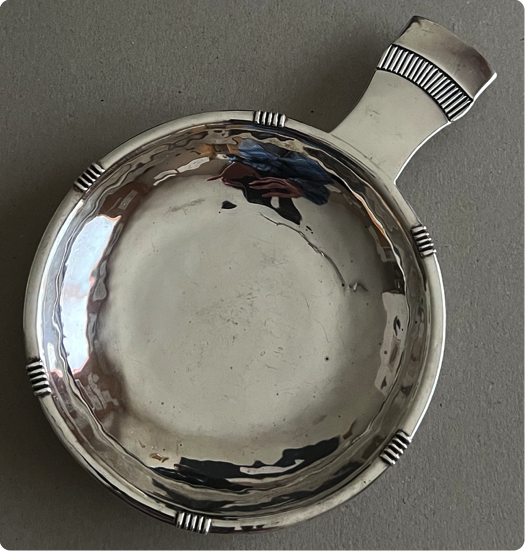
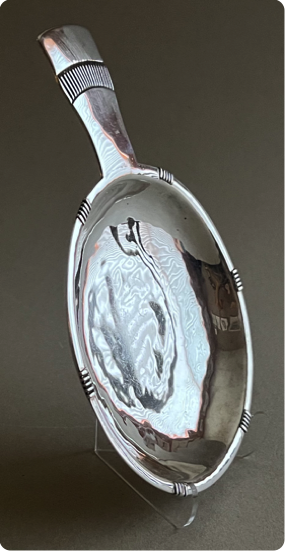
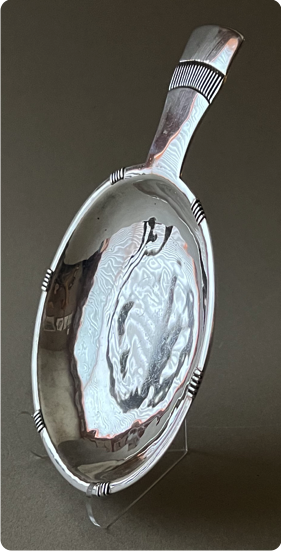
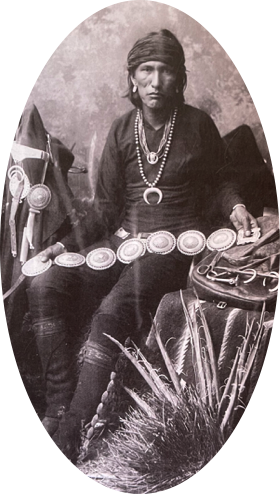
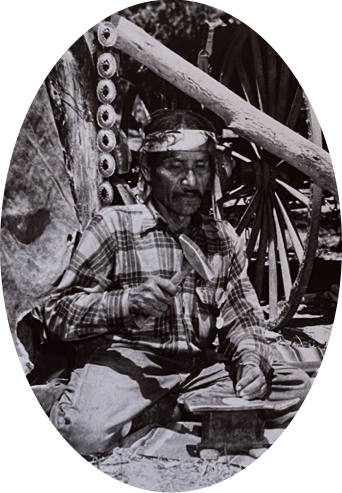
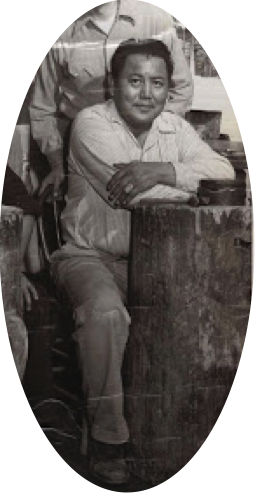
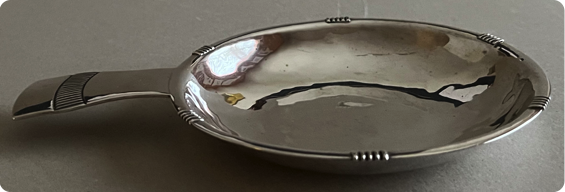

This silver dish’s original purpose was most likely meant to be used as a small, somewhat formal decorative household serving piece of sorts, for holding and passing around nuts or canapes, confections, chocolates or other candies as shown above. “Form follows function” as the great Modernist Bauhaus architect, Ludwig Mies van der Rohe famously declared and Kenneth Begay fulfilled a fairly simple human function here with this simply exquisite and inspired form.
Whether you choose to actually use this dish as a dish or bowl or to simply display and admire it as the beautiful
and elegant art object it is, it works remarkably well. To imbue a simple, fairly functional domestic object with such
an intense beauty and aesthetic soul is the mark of a true artistic master. Anyone, any museum, any private collection, anywhere in the world would and should be honored to own and display such a unique and spectacular one-of-a-kind historic piece, a modern Southwestern art masterwork by a master Southwestern Native artist.
SOLD
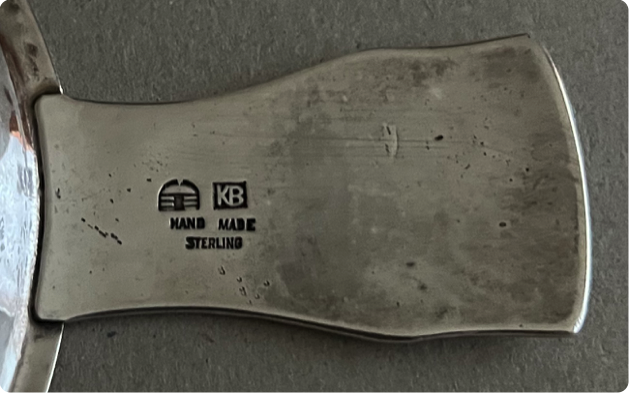
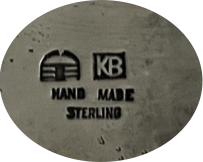
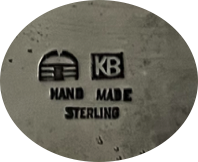
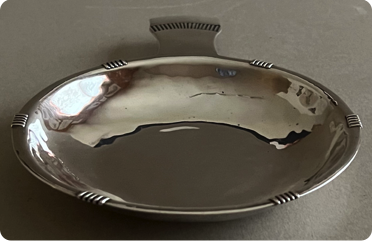
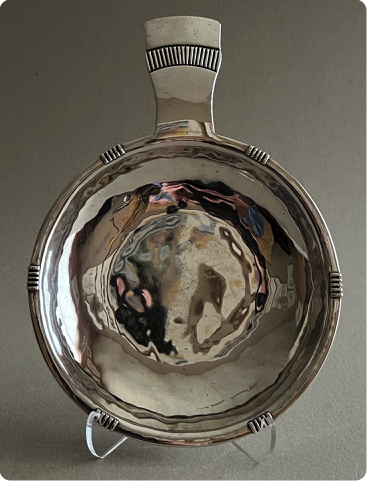
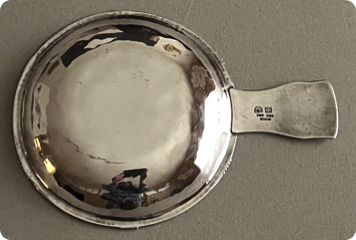
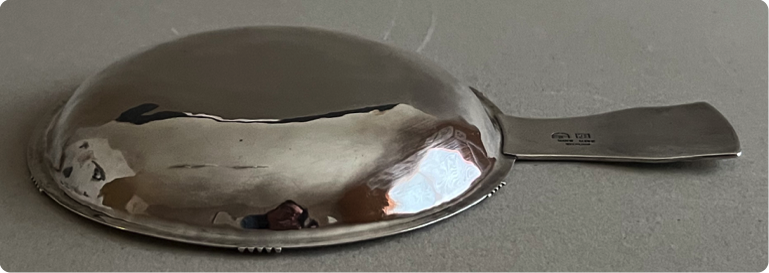
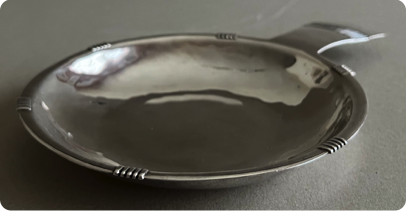
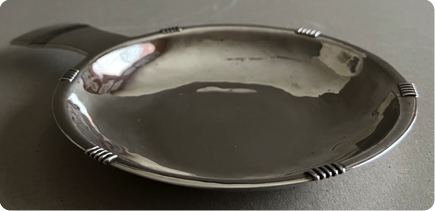
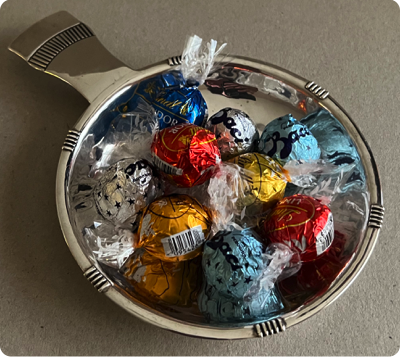
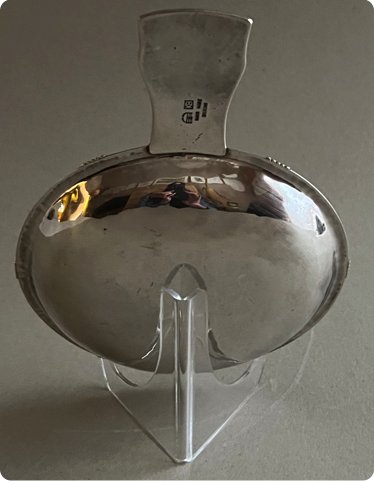
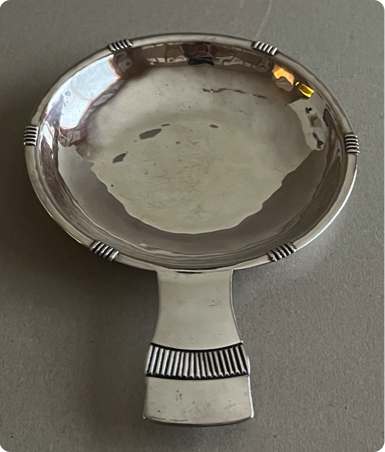
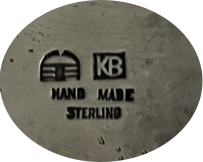
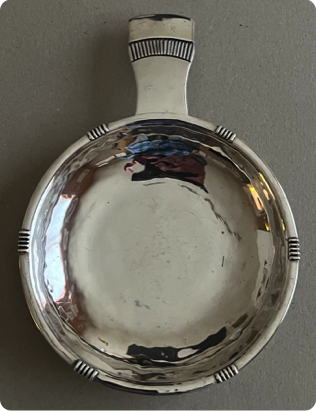
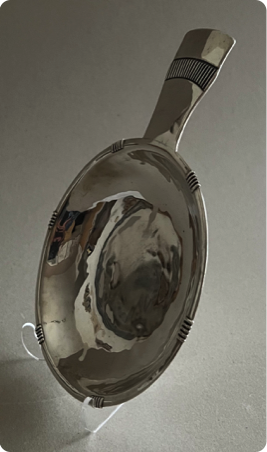
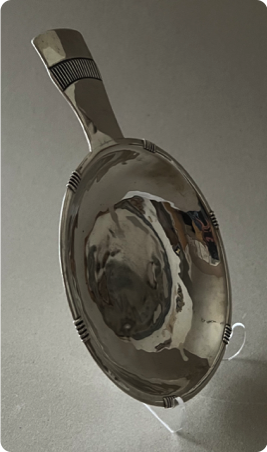
A traditional Navajo hogan in Monument Valley, Arizona.
Photo source and © Fine Arts of the Southwest Inc.